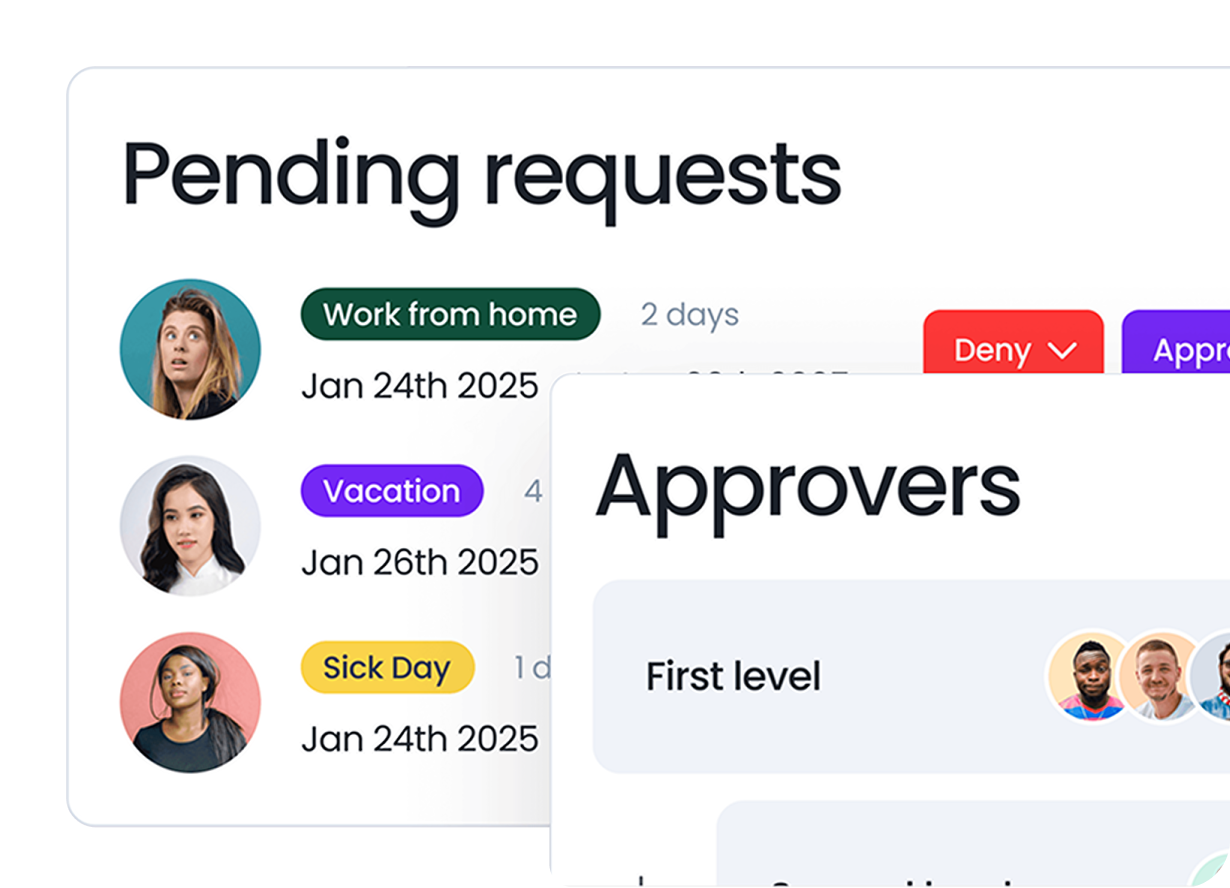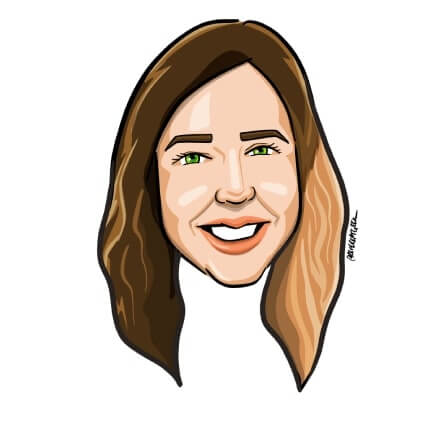Last updated on September 11, 2025
Sick leave is one of the most human parts of work life, yet it’s also one of the hardest for employers to manage. Unlike vacation leave, which is planned and often celebrated, sick leave arrives unannounced. A stomach bug the night before, a lingering cough, or a child’s sudden fever can throw an employee, and their manager, into an unexpected situation.
The way organizations handle these moments speaks volumes about their culture. Supportive policies and empathetic management build trust, while suspicion, inconsistency, or unnecessary demands erode it. But here’s the challenge: how do you show genuine care without crossing into territory that feels invasive? Where is the line between supporting an employee and micromanaging their absence?
Getting this balance right is essential. And with sick leave on the rise, it’s more important than ever.
Why Sick Leave Support Is More Important Than Ever
Global data shows that sick leave is no longer just a seasonal issue. In fact, the average number of sick days per employee has been rising steadily over the past decade. In the UK, the situation has reached a critical point. British workers have taken nearly two weeks of sick leave in the past year, according to the Chartered Institute of Personnel and Development (CIPD). This is the highest level in more than 15 years. Before the pandemic, the average was just over a week.
The CIPD points to several factors behind the rise: an ageing workforce, a surge in long-term health conditions, and the intensifying impact of mental health. Mental health is now the leading cause of long-term absences, while stress contributes significantly to both short, and long-term leave.
The ripple effects are substantial:
Financial cost: In the U.S. alone, the CDC estimates absenteeism costs employers $225.8 billion annually in lost productivity.
Operational disruption: Projects slow down, workloads pile up, and pressure spreads to employees who are still at work.
Cultural strain: When sick leave isn’t managed well, employees feel guilty or pressured to show up while unwell. This leads to presenteeism, which research suggests costs the global economy an estimated $150 billion annually.
Globally, the World Health Organization adds weight to the concern: depression and anxiety alone account for 12 billion lost working days every year, draining nearly $1 trillion in productivity.
Clearly, sick leave isn’t just an HR formality. It’s a business-critical issue that affects performance, culture, and long-term sustainability.
Walking the Fine Line Between Support and Intrusion
Supporting sick employees is essential, but there’s a difference between offering care and prying into personal matters. Most employees don’t mind telling their manager how long they’ll be away. Few, however, are comfortable detailing their symptoms.
Employees feel uncomfortable sharing health issues with their employer, primarily because they fear discrimination, judgment, or gossip.
So, what’s the right approach?
Supportive behavior looks like:
Hope you feel better. Let me know if you need anything. We’ll cover things until you’re back.
Overstepping behavior looks like:
What’s wrong with you exactly? Can you still answer emails while you’re out? We really need you for this project.
It may not seem like much, but these subtle differences in language determine whether employees feel trusted or scrutinized.
Where Employers Go Wrong
Even organizations with good intentions can undermine trust when it comes to sick leave. Here are some common pitfalls:
Overly Rigid Documentation
Requiring a doctor’s note for even one day of absence sends the message: we don’t believe you. Not only does this create resentment, but it also burdens healthcare systems unnecessarily. In Canada, several provinces have even banned employers from requesting sick notes for short absences.
Mixed Signals
Managers who say “take care of yourself” while also emphasizing how disruptive the absence is create confusion. Employees quickly learn that sick leave is “allowed” but not truly supported.
Unequal Treatment
If one employee gets questioned while another gets a free pass, perceptions of favoritism grow. Trust erodes quickly when policies aren’t applied consistently.
Lack of Planning
Many teams have no contingency plan for sudden absences, which causes chaos when someone calls in sick. Instead of feeling supported, employees return to piles of unfinished work, adding stress to their recovery.
Ignoring Mental Health
The stigma around mental health sick leave remains strong. Studies show a strong mismatch between what employees want and what they feel their employers provide when it comes to mental health support. For example, in Deloitte’s cross-industry study, only 59% of employees said their overall well-being was good or excellent
Treating mental health absences differently from physical ones sends the wrong message.
Best Practices for Supporting Sick Leave Without Overstepping
So, what does effective sick leave support look like? It blends clarity, consistency, and compassion.
1. Set Clear, Accessible Policies
Your sick leave policy should answer:
2. Lead by Example
One of the most powerful ways to shift attitudes toward sick leave is through leadership behavior. Employees often look to managers and executives for cues about what is truly acceptable in the workplace.
When leaders drag themselves into the office coughing, or keep their camera on in meetings while clearly unwell, they may think they’re showing dedication. In reality, they’re setting a damaging precedent: commitment means pushing through illness. That silent message ripples through the team, making employees feel guilty about staying home when they need to, even if policy technically allows it. This kind of presenteeism doesn’t just harm the individual, it risks spreading illness to others and ultimately costs the business more in lost productivity.
On the flip side, when leaders take sick leave openly and unapologetically, it normalizes healthy behavior for everyone else. A manager who cancels meetings because they’re unwell, or a CEO who sets their status to “out sick,” is modeling boundaries and self-care. Employees see that it’s not only acceptable but encouraged to prioritize health over “toughing it out.”
What starts at the top quickly shapes the whole workplace.
- It reduces presenteeism, because employees feel empowered to actually rest when they need to.
- It strengthens trust, as workers see consistency between leadership’s words (“your health matters”) and actions.
- It builds resilience, since a healthier team ultimately recovers faster and performs better long term.
If organizations want employees to respect sick leave policies, leaders must live them first.
3. Communicate With Empathy
Simple, supportive communication can completely change how an employee feels about taking sick leave. When someone is unwell, they’re often already worried about falling behind, burdening their teammates, or being judged for being absent. The way a manager responds in those first moments can either ease those worries or amplify them.
A phrase like:
Don’t worry about work, we’ll handle things. Focus on getting better.
does more than just acknowledge the absence. It sends a signal of trust and care. The employee hears: your health comes first, and the team will support you until you return. Crucially, it avoids pushing for explanations, medical details, or promises to stay connected while they’re out.
Contrast that with a response such as:
How sick are you exactly? Can you still check emails?
This kind of reply puts the employee on the defensive, forcing them to justify their illness instead of focusing on recovery. Over time, these small moments shape workplace culture. One approach builds loyalty and psychological safety, while the other breeds fear and disengagement.
4. Offer Flexible Options
Not every illness demands a complete break from work. Some employees may feel well enough to contribute in a limited capacity but not at full speed. Offering flexible arrangements in these situations can strike the right balance between keeping the business running and supporting recovery.
For example, an employee with a minor but lingering condition might prefer to work from home for a few days to avoid commuting stress and the risk of spreading germs. Others may benefit from reduced hours, such as starting later in the morning if they’re recovering from medication side effects or fatigue. In cases of serious illness or after surgery, a gradual return-to-work plan, where the employee comes back part-time or with adjusted responsibilities, can help them ease back in without feeling overwhelmed.
Flexibility doesn’t just benefit the individual. It demonstrates that the organization recognizes employees as whole people with varying needs. This approach builds loyalty and reduces turnover, because people are far more likely to stay at a company that respects their well-being. It also helps productivity in the long run: employees recover more fully, return stronger, and are less likely to relapse or burn out.
The key is to make flexibility a genuine option, not an expectation. Employees should never feel pressured to work while unwell, but they should know that alternatives exist if they want them. When handled with care, flexible sick leave practices show that the organization values both health and sustainable work-life balance.
5. Protect Privacy
When an employee takes sick leave, managers often feel the urge to ask questions so they can “understand” the situation. But in reality, managers only need information that’s relevant for planning, such as how long the person expects to be out, whether urgent tasks need to be reassigned, or if a phased return might help.
Digging into the specifics of someone’s medical condition crosses a line. It can make employees feel exposed or mistrusted, and it’s rarely useful for managing the workload. Protecting confidentiality not only builds trust but also reinforces professionalism. From a business perspective, it reduces the risk of breaching privacy laws or mishandling sensitive health data.
6. Track Patterns Respectfully
While you shouldn’t interrogate individual absences, tracking overall sick leave data can reveal important patterns. For example, repeated absences on Mondays might signal disengagement or burnout, while seasonal spikes could point to recurring flu outbreaks. Looking at the bigger picture helps managers address root causes rather than treating every absence as an isolated incident.
If you want to go deeper, we’ve written an article on how to address excessive absenteeism that explores practical strategies for creating a healthier, more engaged workforce. By combining supportive sick leave policies with proactive measures, organizations can lower absenteeism rates while still respecting employee well-being.
The Role of Mental Health Sick Leave
Today, more employees are taking sick leave for mental health reasons, and organizations need to treat these with the same seriousness as physical health.
According to the World Health Organization, depression and anxiety cost the global economy $1 trillion annually in lost productivity. Supporting mental health isn’t just compassionate, but it’s financially smart.
Practical steps include:
- Normalizing “mental health days.”
- Offering Employee Assistance Programs (EAPs).
- Training managers to recognize burnout signs.
- Creating return-to-work plans that reduce stigma.
When employees know their mental health is respected, they’re more likely to seek help early, before it escalates into long-term absence.
Compliance and Legal Considerations
Every region has its own rules, but there are a few universal principles:
Entitlement: Many countries mandate a minimum number of sick days. For instance, the UK provides Statutory Sick Pay for up to 28 weeks.
Privacy: Data protection laws like GDPR restrict how employers can collect and store health information.
Non-retaliation: Employees can’t be punished or discriminated against for taking legally entitled sick leave.
Failing to comply isn’t just risky, but can result in lawsuits, fines, and reputational damage.
How Vacation Tracker Helps You Support Sick Leave
Even the most compassionate managers need the right leave management systems to back them up. That’s where Vacation Tracker comes in.
With Vacation Tracker, employees can log sick leave in seconds through Slack, Microsoft Teams, Google Workspace, or Email. No awkward phone calls, no oversharing. Managers get instant visibility into absences, so they can plan workloads without pressing for details.
Here’s how it helps you support without overstepping:
- Streamlined requests: One-click reporting keeps things simple for employees.
- Policy automation: Customize sick leave rules to stay compliant across regions.
- Privacy protection: Collect only the necessary info and nothing more.
- Real-time visibility: See who’s out and when, without needing explanations.
- Trend reporting: Spot potential burnout or recurring issues without micromanaging individuals.
- Global adaptability: Whether your team is in one office or spread worldwide, Vacation Tracker supports local policies.
In other words, Vacation Tracker keeps the process professional, respectful, and stress-fre for both sides.
Tracking Can Be
Learn how to manage time off without
confusion, delays, or admin headaches.

Supporting sick leave isn’t just about checking a legal box. It’s about creating a culture of trust. Employees should feel safe staying home when they’re unwell, without guilt, judgment, or invasive questions.
The best companies get this balance right. They provide clarity through policy, empathy through communication, and fairness through consistency. They also rely on smart tools to remove friction from the process.
That’s exactly what Vacation Tracker offers. A way to manage sick leave with clarity, compliance, and compassion.
Because when employees know their health is respected, they don’t just recover faster, they come back more engaged, more loyal, and more committed to your organization’s success.

Aleksandra Cvetkovic
Aleksandra has been with the team since day one, bringing her passion for all things marketing.




